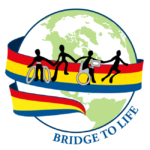Communication is a complex, dynamic, transactional process (Blackstone, Williams, Wilkins, 2007) which enables us to create meaningful connections, to learn and share new knowledge, to engage authentically with others, and to participate in broader society. For individuals with complex communication needs (CCN), effective and successful intervention results in access to the power of communication. Without effective communication interventions, individuals with CCN are at risk for limited self-expression and personal development, undeveloped social relationships, and restricted participation in society.
Thirty years ago, Janice Light posed a construct for stakeholders in the field of AAC that defined the ultimate goal of all communication interventions: the development of Communicative Competence. Communicative Competence is “a relative and dynamic, interpersonal construct based on functionality of communication, adequacy of communication, and sufficiency of knowledge, judgment and skill in four interrelated domains: linguistic competence, operational competence, social competence, and strategic competence” (Light, 1989). Students with CCN who use AAC need uniquely tailored interventions that support the development of communicative competence. In this session the presenter will provide a detailed look at Communicative Competence. Through videos, photos, and case examples, participants will learn how to apply the Communicative Competence framework to guide intervention planning, inform AAC system design, and influence educational environments. Participants will also gain a clear understanding of the key psychosocial factors involved in the attainment of communicative competence through stories of resilience, motivation, attitude, and confidence.


